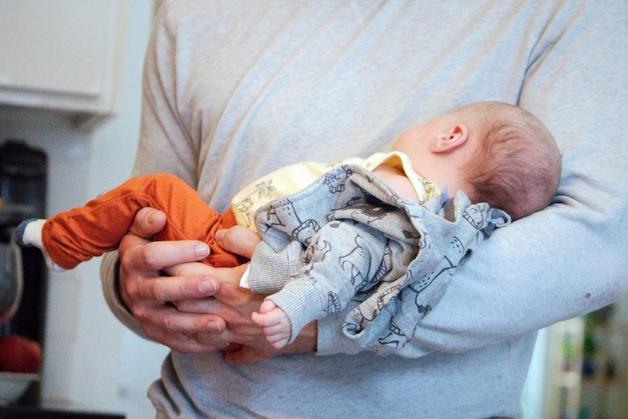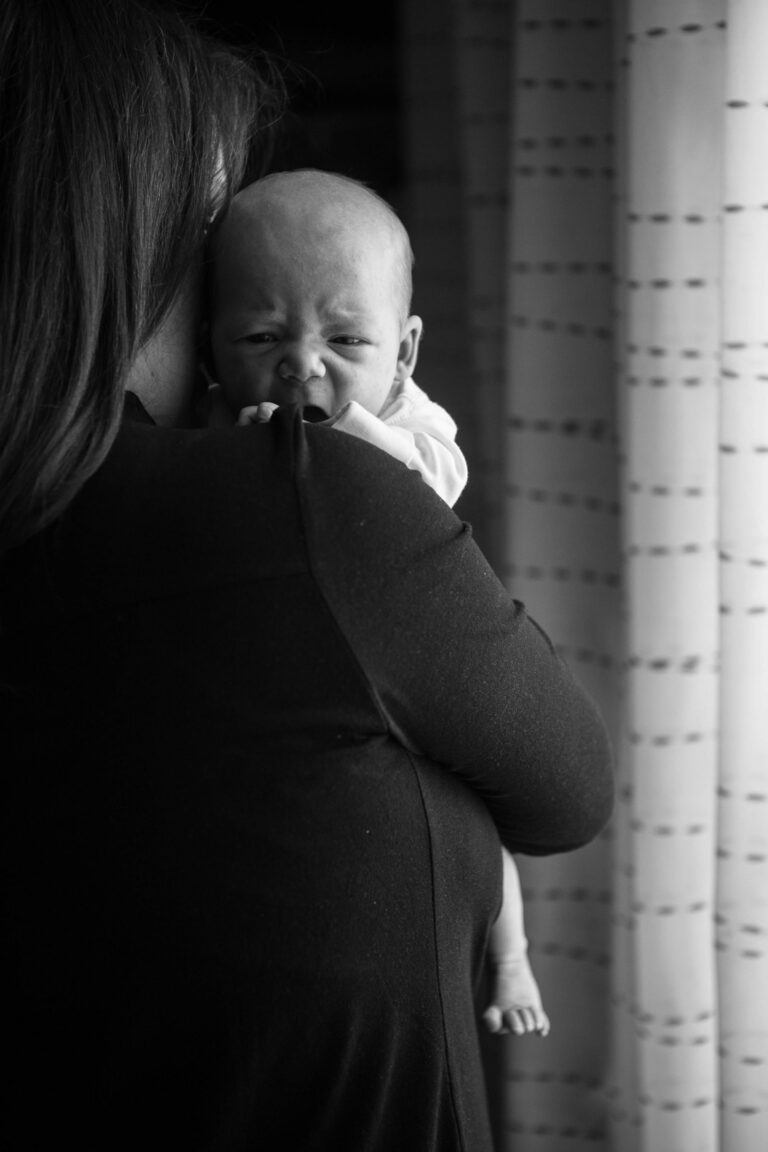Rocking—gentle, rhythmic, instinctive—creates a world of calm where tension often dissolves. Perhaps you’ve found yourself, after a sleepless night or an unsettled nap, swaying your little one in your arms, wondering if that small, repetitive motion can truly make a difference. The worries are real: fragile sleep, inconsolable crying, post-delivery discomfort, even doubts about development. And then, for older family members, aching joints, tension, sleep disruptions—so many everyday concerns that seem, at first glance, a world apart. Yet, in practice, a thread unites all ages: the astonishing benefits of rocking. This simple gesture influences physical health and emotional comfort, strengthens neurological pathways, and helps everyone—babies, parents, grandparents—find their own moments of equilibrium, connection, and rest. Curious to know how? Let’s explore the science, the tradition, and practical strategies for integrating rocking into each family member’s life.
Rocking: From Instinct to Evidence—A Universal Need for Comfort
The sight of a parent cradling and rocking a newborn is one of those primal images—practically woven into the fabric of family life. Scientists now confirm what caregivers sensed long before: rocking triggers activation of the vestibular system, located deep within the inner ear, responsible for balance and spatial awareness. This stimulation is the very mechanism that soothes even the littlest hearts, fostering a sense of security similar to sensations in the womb.
If you wonder why your child’s eyes grow heavy with each soft sway, neuroscience tells us that rocking harmonizes brain wave activity, increasing sleep spindles—short bursts of neurological signals linked to deeper, less fragmented sleep. Parents and elders alike benefit, as the physiological magic of rocking isn’t reserved for childhood alone; it resonates through every stage, offering respite, relaxation, and improved well-being.
The emotional dimension—often overlooked—carries equal weight. Each session of rocking, whether set to a lullaby or simply the gentle creak of a chair, ushers in the release of endorphins. These “feel-good” neurotransmitters elevate mood, soften daily stresses, and weave bonds of attachment within the family unit. For many, these micro-moments of calm become the bedrock of resilience.
Enhancing Growth: Rocking in Child Health and Development
Let’s get to the heart of parental anxiety: healthy development. The benefits of rocking are extensive and multi-faceted, especially in infancy and early childhood. Not only does rocking calm an irritable baby—it plays a genuine, documented role in supporting the growth of critical neurological systems.
How Does Rocking Influence Development?
- Vestibular stimulation: Rocking’s gentle motion nurtures spatial orientation skills, balance, and motor coordination, laying groundwork for later milestones like crawling, walking, and even academic learning.
- Sleep quality: The synchronization between movement and neurological rhythms improves total sleep time and efficiency. Babies rocked gently before bedtime fall asleep faster and experience fewer nighttime awakenings.
- Emotional security: The repeating, predictable rhythm provides a psychological anchor, lowering stress hormone (cortisol) levels and supporting secure attachment between parent and child.
- Colic and digestion: By offering mild, continuous motion, rocking can help settle discomfort linked to infant colic or digestive distress. The relaxation response extends to easing muscle tension and regulating breathing patterns.
Pediatricians and sleep specialists routinely advise the integration of rocking—whether in a rocking chair or with body movements—into infant sleep routines, precisely for these science-backed reasons.
Broadening the Perspective: Rocking Across the Lifespan
Rocking for Parents and Adults
Sometimes, after a demanding day filled with obligations, worry, or the lingering exhaustion of sleepless nights, even adults need comfort. The benefits of rocking are surprisingly relevant to grownups who crave a mental break or an antidote to restlessness. Evidence suggests that gentle rocking:
- Reduces stress and anxiety, modulating the autonomic nervous system for a “rest and digest” effect.
- Supports meditation and mindful breathing, creating a bridge between physical relaxation and mental clarity.
- Promotes deep sleep by nudging the brain toward restorative wave patterns, ideal for individuals combating insomnia.
Try swaying slightly while seated, or indulge in the comfort of a rocking chair during a short mindful break—it’s more than nostalgia; it’s a practical, physiological tool for emotional balance.
Rocking for Seniors
The circle completes itself when the benefits of rocking embrace the elderly—those who sometimes feel left behind by their own bodies. For seniors, especially individuals facing arthritis, cognitive changes (like Alzheimer’s disease or other forms of dementia), or muscular stiffness, rocking provides:
- Pain relief: Gentle motion promotes joint flexibility, eases muscle tension, and boosts blood circulation, helping reduce aches unresponsive to medication.
- Mood stabilization: Rocking nurtures emotional calm, lowers agitation, and instills a sense of security.
- Increased independence: Regular use of a supportive rocking chair encourages gentle exercise, stimulating leg, core, and pelvic muscles.
Some physiotherapists even champion rocking as part of fall-prevention strategies, citing improvements in muscle tone and balance.
The Medical and Therapeutic Foundations of Rocking
Modern therapeutic approaches leverage the benefits of rocking in diverse contexts—think occupational therapy, trauma recovery, neurological rehabilitation, and sensory integration programs.
- ADHD and Autism: Individuals with attention difficulties or heightened sensory needs often find that rhythmic rocking calms nervous system hyperactivity—helping focus, self-regulation, and emotional resilience.
- Trauma recovery: Controlled rocking sessions can decrease physiological arousal, aiding those affected by anxiety, post-traumatic stress, or recovery from major illness.
- Neurological healing: Surprising yet scientifically noted—rocking has supported faster recovery trajectories after certain surgeries and is linked to better outcomes for motor rehabilitation.
Understanding these mechanisms empowers parents to make intentional choices, integrating rocking as a recognized adjunct to medical care without fear or guilt.
The Interplay of Words, Music, and Connection
No fewer than three “ingredients” amplify the benefits of rocking: motion, sound, and human presence. Whispered lullabies, gentle rhythmic stories, the soft thrum of white noise or a carefully chosen baby-sleep melody—each layer reinforces the sensory cocoon, supporting both parent and child.
- Language and rhythm: Repetition, melody, and gentle speech synchronise with the rocking movement, enhancing the feeling of safety and readiness for sleep or relaxation.
- Music and soundscapes: Using mild, background audio—subtle instrumental music or even environmental sounds like rain—can stretch the calming effect even further.
Families with children having sensory processing needs, as well as those juggling the push and pull of everyday stress, often turn to multimodal approaches, blending touch, sound, and movement for maximum benefit.
Rocking as Sustainable Practice and Daily Ritual
Contemporary families are more aware than ever about the environmental impacts of their choices. Many rocking chairs now use materials like FSC-certified wood, bamboo, or rattan—sustainable, natural, and pleasing to the senses.
To establish rocking as a meaningful daily ritual:
- Allocate a dedicated, clutter-free corner for a rocking chair to make relaxation both accessible and safe.
- Choose ergonomically designed rockers to support spine and joint health, especially for those recovering from pregnancy, surgery, or managing chronic pain.
- Involve everyone: aged grandparents, tired parents, curious toddlers each drawn in by tailored routines which champion both tradition and innovation.
Symbolism, Language, and Emotional Anchors
Rocking isn’t merely actionable; it swims in the deeper waters of family memory and cultural representations. In stories, poems, and daily language, rocking is a symbol of serenity, hope, and sometimes, hard truth. The phrase “rocking one’s illusions” reminds us that expectations and reality can clash—yet mindfulness transforms even disappointment into growth.
Embracing rocking—its movement, its sounds, its emotional cadence—translates into a home imbued with responsive, kind, and medically informed nurture.
How to Make Rocking a Safe, Beneficial Practice
- Opt always for age-appropriate, stable rockers; supervise babies, individuals with mobility issues, or seniors with balance concerns.
- Use rocking as a pre-bedtime ritual—rich in cues for winding down.
- Adjust speed and duration to suit individual sensitivity or need (for some children, a slower tempo is best; for others, a short brisk session “resets” emotional states).
- Integrate soft background music, ambient noise, or gentle storytelling to foster an even deeper state of relaxation.
- Encourage short, structured sessions for children or adults seeking sensory regulation or a mental “reset.”
Keeping spaces safe, using supportive posture, and tuning into each person’s unique needs are the final pieces in creating a routine that brings maximum benefit with zero risk.
Key Takeaways
- The benefits of rocking are rooted in both tradition and solid scientific principles, touching every member of the family, from newborns to grandparents.
- Rocking fosters neurological development, regulates emotional responses, and supports restorative sleep by leveraging the power of vestibular stimulation and endorphin release.
- Integrating rocking with music, language, and mindful routine enhances emotional bonds and supports positive behavioral patterns.
- A thoughtful rocking practice can be adapted for diverse needs—soothing colic in babies, easing adult stress, encouraging mobility in seniors, and assisting in therapy for ADHD, autism, or trauma recovery.
- Sustainable choices in rocking furniture are not only eco-friendly but support local craftsmen and long-term wellness.
- Professional advice remains invaluable: always consult your pediatrician, family doctor, or therapist if you encounter persistent developmental or health concerns.
- For further guidance, practical tips, and custom health questionnaires for your child, the application Heloa delivers expert insights tailored to each unique family dynamic.
Questions Parents Ask
Can rocking help with colic in babies?
Absolutely—many parents find rocking to be a comforting intervention when colic strikes. The rhythmic, repetitive motion can help relax both the baby and the caregiver, providing moments of relief during what can otherwise be an emotionally taxing time. While it might not resolve every episode completely, it often soothes crying, reduces stress levels, and grants precious pauses in the cycle of discomfort.
Is rocking safe for all ages, including newborns and seniors?
Yes, provided it’s done with attention to safety. For newborns, ensure the movements are gentle and always supervised—whether in arms or a well-designed infant rocker. Seniors and adults should have supportive chairs, ideally with armrests and a wide, stable base, to prevent tipping or loss of balance. Adapt the routine and rocker style to match each person’s needs—prioritising secure environments and attentive, present care.
Can rocking be beneficial for children with sensory processing challenges?
Often, yes. Rocking’s repetitive motion offers sensory input that can help children—especially those with autism or sensory processing differences—regulate their nervous system. A tailored approach, with adjustable session lengths and rocking speeds, often yields improvements in calmness, focus, and overall mood. Adapt as required: some children benefit from brief, structured sessions; others prefer longer, gentler sway. Listen to your child’s cues and, if in doubt, seek guidance from a healthcare or occupational therapy professional.









